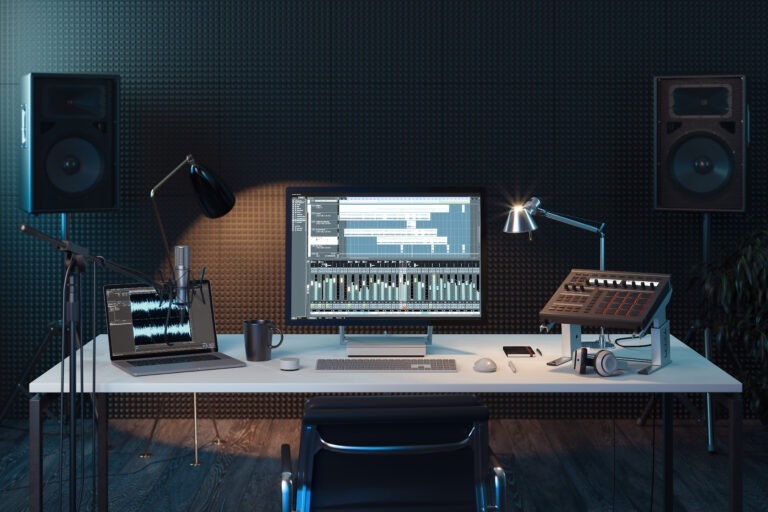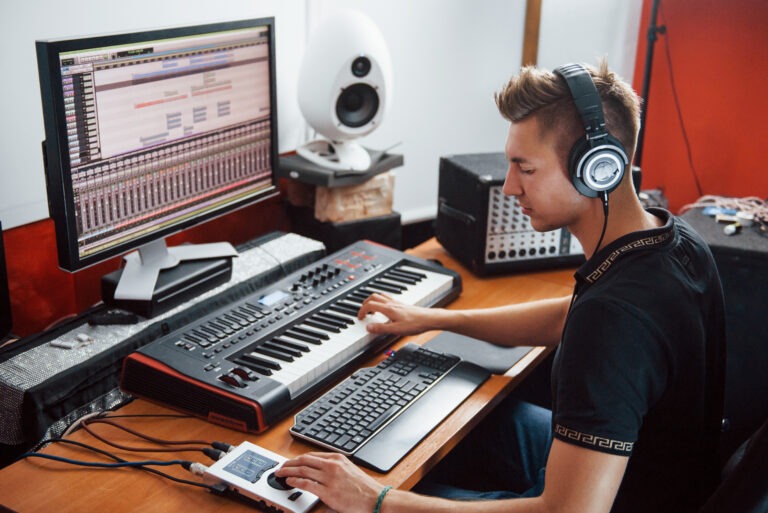Whether you’re producing a brand commercial, explainer, or video campaign, learning how to describe a voice helps you match your creative vision with the ideal sound.
At Voice123, the most trusted voice-over platform for hiring professional voice actors, we understand the importance of correct voice descriptions in AV projects. Here, we’ll break down the main ways to describe a voice, the best words to describe tone, and real-world voice descriptors to include in your next project brief.
What are voice descriptions?
Voice descriptions are a detailed explanation of how a voice sounds, including the vocal qualities like pitch, pace, and emotional tone. When you give voice actors the right direction, it transforms your script from lines on a page to an engaging audio experience.
For example:
- A brand promo may need a bold, confident, and persuasive tone.
- A documentary narration might call for an authoritative, calm, and informative delivery.
- Video ads often benefit from a relatable, upbeat, conversational sound.
What are the main ways to describe someone’s voice?

If you’re wondering how to describe a voice, start with the basics:
- Tone of voice – The emotional quality of the performance, like sincere, energetic, or dramatic.
- Character – Who is the speaker? List their age, gender, background, and personality.
- Delivery style – How the voice is performed, whether it’s fast-paced, deliberate, or conversational.
- Vocal qualities – Texture, pitch, resonance, and timbre that define the sound.
When writing voice descriptions, use a mix of voice adjectives and voice descriptors that reflect these qualities. For instance:
- “Warm, conversational, trustworthy” for customer explainer videos.
- “Bold, gritty, dynamic” for cinematic movie trailers.
- “Smooth, persuasive, engaging” for product spots like the Capital One commercials.
You can find thousands of samples on Voice123’s voice actor database to help refine how you describe a voice in your next brief.
How to describe a voice in writing
When learning how to describe a voice in writing, use words that capture tone, pitch, and personality—like “warm and conversational” or “deep and authoritative.” The key is to choose voice descriptors that help readers or voice actors instantly imagine how the voice should sound in context.
Words to describe a voice
Finding the right words to describe a voice makes your creative brief actionable. Here are some voice adjectives and voice descriptors for different project types:
Commercials & Brand Spots
Need an energetic, attention-grabbing sound? Try:
Dynamic, energetic, confident, enthusiastic, authentic, persuasive.
Explainer & Corporate Videos
Looking for a friendly, professional tone? Use:
Clear, warm, conversational, knowledgeable, relatable, smooth.
Promos & Trailers
For an epic or cinematic voice over:
Dramatic, intense, powerful, bold, commanding, deep.
Documentaries & Narrations
For an informative or reflective delivery:
Authoritative, calm, credible, articulate, rich, measured.
E-Learning & Training Content
Educational but engaging? Go for:
Approachable, patient, expressive, natural, articulate, supportive.
Social Ads or UGC-Style Content
For TikTok voice overs or UGC videos:
Natural, spontaneous, youthful, upbeat, inviting, cool.
Listen to examples of professional performances in video production projects. This helps you pair your voice characteristics with the right talent faster.
How to describe tone of voice
Tone of voice defines how something is said, so it’s important to think about the emotion you want your audience to feel.
For example:
- Optimistic and inspiring: Ideal for motivational brand videos.
- Serious and formal: Perfect for financial or corporate explainers.
- Playful and witty: Great for social media content or ads targeting Gen Z.
Experiment with combining words to describe tone of voice, like “confident yet approachable” or “warm but authoritative.” This balance gives your voice descriptions more nuance and depth.
How to describe a voice in AV projects
Commercials
“We’re looking for a confident, upbeat voice with a hint of playfulness—something like Ryan Reynolds’ delivery in Mint Mobile ads.”
Explainer videos
“The tone should be friendly, relatable, and knowledgeable. Think clear pacing with warmth, like a trusted colleague explaining a new app.”
Trailers
“We need an intense, cinematic delivery—strong and persuasive, similar to Don LaFontaine’s legendary movie trailer style.”
eLearning
“Clear, patient, and encouraging. The voice should guide learners through complex topics in a relaxed, conversational tone.”
By clearly defining how to describe a voice in writing, you help actors adapt their vocal qualities while maintaining creative freedom.
Final Thoughts

Learning how to describe a voice is one of the most powerful tools in a producer’s creative toolkit. From choosing the right words to describe a voice to identifying precise vocal qualities, your ability to define what you want ensures your message sounds exactly as it should.
Whether you need an authoritative narrator, a warm brand storyteller, or a quirky character actor, the right voice can elevate your entire production.
Explore professional voice actors on Voice123 — where thousands of talented voices help producers like you bring their projects to life.
FAQs
You can compliment a voice by describing its vocal qualities — for instance, “You have such a warm and inviting tone,” or “Your voice is so expressive and confident.”
You describe a person’s voice by noting its pitch, pace, timbre, accent, and tone. Use voice adjectives like smooth, raspy, powerful, or melodic.
How do you describe a singer’s voice?
A singer’s voice characteristics include range, texture, and resonance. You can use voice descriptors like soulful, airy, husky, or vibrant, depending on the genre.
A deep voice can be described as rich, resonant, commanding, or velvety — often suited for trailers, narrations, and dramatic commercial reads.


































































